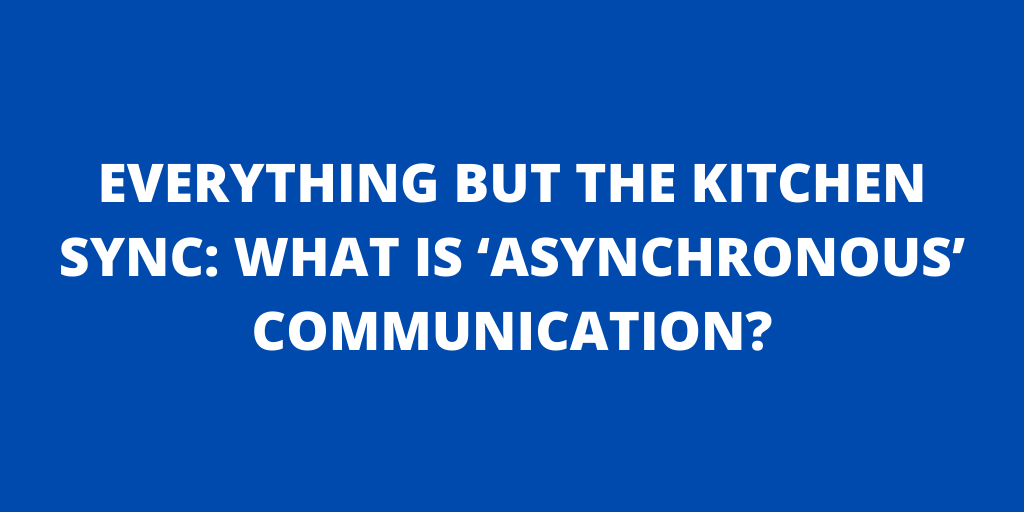Everything but the kitchen sync: What is ‘asynchronous’ communication?
In an era where remote working is becoming more popular and employees often don’t work in the same space, asynchronous communication has become a bigger part of the workplace. But what exactly is it? This article will tell you everything you need to know about asynchronous communication, how it differs from synchronous communication and the benefits and drawbacks for your business.
What is asynchronous communication?
Asynchronous communication refers to any type of communication where one person provides information and there is a time delay before the recipients receive the information and respond. To put it simply, it’s communication that doesn’t happen in real-time.
Examples of asynchronous communication include email, messaging tools such as Slack or Facebook Messenger, or a messaging board.
In contrast, synchronous communication is communication that takes place in real-time, such as an in-person meeting or a meeting held over a streaming service like Zoom.
Another example of synchronous communication is the webinar. When live, the audience can actively participate by asking questions, which the hosts then receive and can immediately respond to.
Is asynchronous communication good for business?
As mentioned earlier, asynchronous communication has become a bigger part of the workplace in recent years. Thanks in part to the COVID-19 pandemic, more employees are working remotely. As a result, workers could be in different time zones, making synchronous communication difficult or impossible. Asynchronous solutions can therefore help by avoiding the hassle of getting workers in different time zones together at the same time.
Asynchronous video can also provide benefits. Not having to produce the video live, you have more time to fine-tune your message, making sure it’s well thought out and useful to other staff members. Performing the video live, you run the risk of forgetting a key point or getting distracted, which you don’t have to worry about in an asynchronous video.
Asynchronous video can also be beneficial by giving colleagues time to digest all the information in the video before they respond, as well as the ability to re-watch the video should they miss anything. This applies to all forms of asynchronous communication- the recipient has time to take in the information and plan their response.
Asynchronous communication can be beneficial, but there are also some drawbacks. The lack of face-to-face communication could result in a loss of connection, potentially denying the recipient the opportunity to build a relationship with their co-workers. This can sometimes mean that employees are not always on the same page, which can lead to disruptions. In the case of remote working, however, such a connection may not be possible.
Asynchronous communication can also lead to less of the spontaneous brainstorming that can often be present during meetings, as employees are not bouncing ideas off each other in real-time.
Final thoughts
Ultimately, both synchronous and asynchronous communication has been a big part of most businesses for a long time. There are definite benefits and drawbacks involved with each method of communication, but, depending on what type of business you run, both synchronous and asynchronous communication techniques can be a big help in increasing your employee’s productivity.





